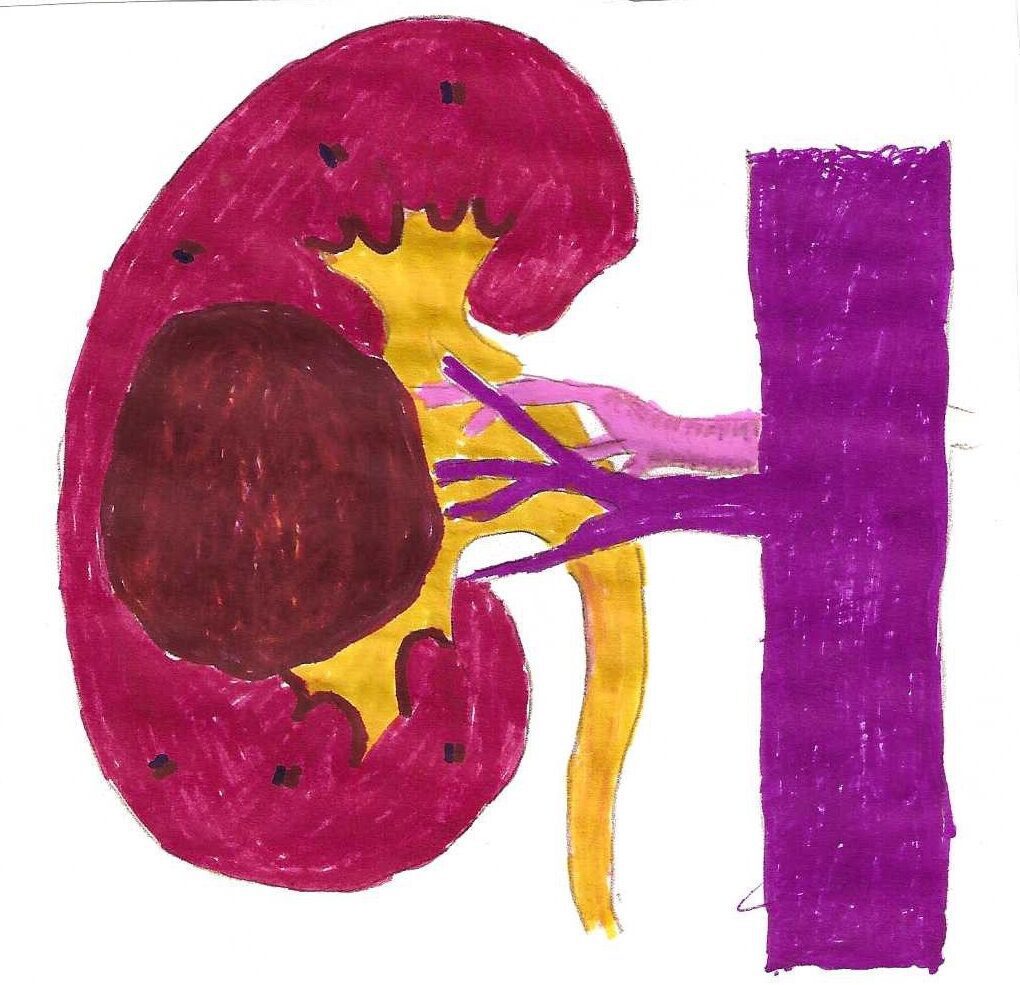Giulio Nicita
Florence, Italy

Florence was covered in a blanket of snow. Only three patients were sitting in Guido’s waiting room. Others had canceled because of the weather. A young pregnant woman waited with her husband and was soon ushered into the office. When the couple was seated at the doctor’s desk, he asked the woman if she preferred to be seen alone.
“I’d prefer if my husband were present,” she said. Then she added that she was terrified, for herself and for her baby. She recounted that after a year of marriage, she became pregnant. An ultrasound had confirmed her pregnancy but also showed that she had only one kidney. Furthermore, in that kidney, in contact with the renal pelvis, was a four-centimeter cyst. She began to weep desperately. Additional tests had shown that the so-called “cyst” in the kidney was in fact a malignant tumor.
After looking at the imaging results for a long time, the doctor said, “We need to enucleate the tumor. That means we would remove the mass while leaving the remaining part of the kidney intact. Since there is only one kidney, the sooner the surgery is done, the better.”
The woman looked shaken and said, “Another doctor recommended removing the kidney, which would mean dialysis and then possibly a kidney transplant.”
Guido said gently but firmly, “I disagree. I think we could remove your tumor, preserve the rest of the kidney, and avoid dialysis. Your growth is of medium size and seated deep within your kidney. Both of those factors do make the operation more difficult. Usually, such masses grow about a millimeter per month, which in absolute terms is not much. But in your case, an extra half-centimeter could make it impossible to save the kidney. In other words, were you to postpone surgery until your baby is born, you might lose the kidney. The tumor is already so close to the main renal vessels that I fear damaging the artery if we wait. That would mean dialysis. And a renal transplant cannot be performed until someone has been cancer-free for five years. You would not be eligible for a transplant for at least five years if we removed the kidney.”
At this point the husband intervened. “I don’t want to be impertinent, but how many cases like my wife’s have you treated?”
Guido had to admit that he had never had a similar case. “Frankly, I don’t know any urologist who has treated such cases. A situation like yours is quite rare. I have operated on a pregnant woman with an advanced kidney tumor, but she had both kidneys. For her, the only possible solution was a nephrectomy. But I have enucleated more than a hundred kidney tumors. About ten of those were on patients who had only one kidney. I have never had a complication that required removal of the entire kidney. The particular difficulty here arises from the depth of the tumor within the kidney. Because it is invisible on the surface of the organ, an intraoperative ultrasound must be performed to show where to cut the healthy tissue in order to reach the tumor.” He also noted that because of the pregnancy, the operation had to be as rapid and error free as possible.
After answering a few more questions, Guido concluded, “I am confident that I will save your kidney and remove the tumor. Five months from now, you will be able to give birth peacefully. Think about all we have discussed, and please decide soon.” Then he bade them farewell.
A few days later, a residue of dirty snow remained on shaded areas of the sidewalks. The pale winter sun fell on the woman in the hospital bed, and Guido sat beside her. She had been depressed ever since the tumor had been discovered, but the doctor’s words boosted her mood.
“The surgery could not have gone better. We were able to remove the mass entirely without damaging the kidney and without much bleeding. Today’s tests show that the kidney works perfectly! It should do so throughout your entire life. Equally important, your baby was not affected by the trauma of the operation. Do you want me to tell you about it?”
“Doctor, it is enough for me to know that my son is in good health and that I am not going on dialysis,” she said.
“I assure you of both things!” Guido replied.
The woman began to cry, this time with tears of joy. She put her hand to her mouth, blew the doctor a kiss, and motioned for him to come closer to the bed in order to give him a hug.
Six months later, a nurse brought the young couple into Guido’s office, their little one in a buggy.
“How nice to see you…you look great!” said the doctor, approaching to take the woman’s hands.
“Doctor, thanks to you I’m fine…and so is he,” she replied cheerfully,
pointing to the child flailing his bare arms and legs in the buggy. The doctor bent over the child and gently squeezed the little hand between his fingers.
“Congratulations, this young man is beautiful. What’s his name?”
“Guido!” replied the mother.
Further reading
Ghavamian R et al. “Renal cell carcinoma in the solitary kidney: an analysis of complications and outcome after nephron sparing surgery.” J Urol 2002 Aug;168(2):454-9. doi:10.1016/s0022-5347(05)64657-5.
GIULIO NICITA held the Chair of Full Professor of Urology at the University of Florence from 2002 until 2016 after a career begun there as resident in 1972. His fields of clinical study were urological oncology, female urology, and kidney transplantation. He is the author of numerous articles on various topics published in Italian and international journals.

Leave a Reply